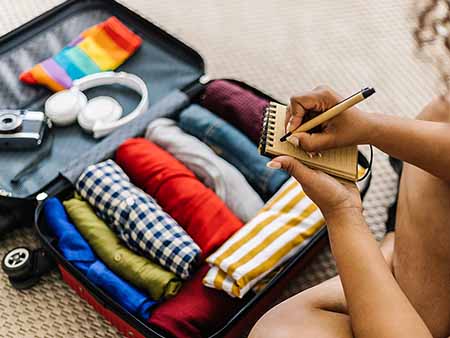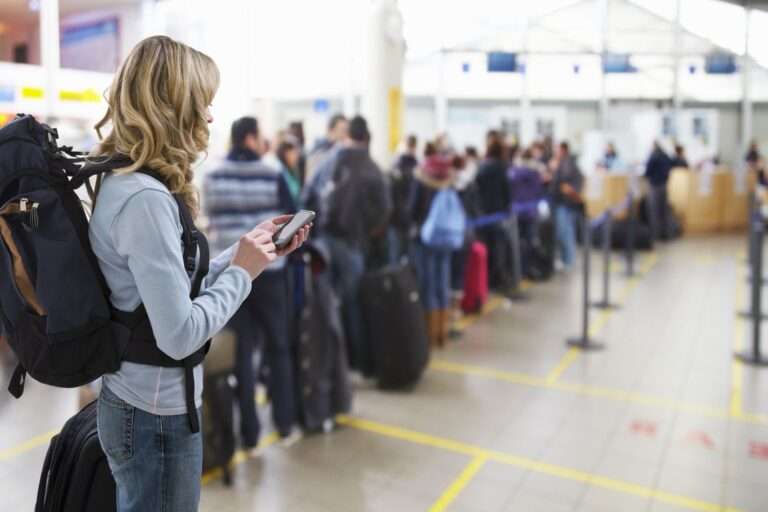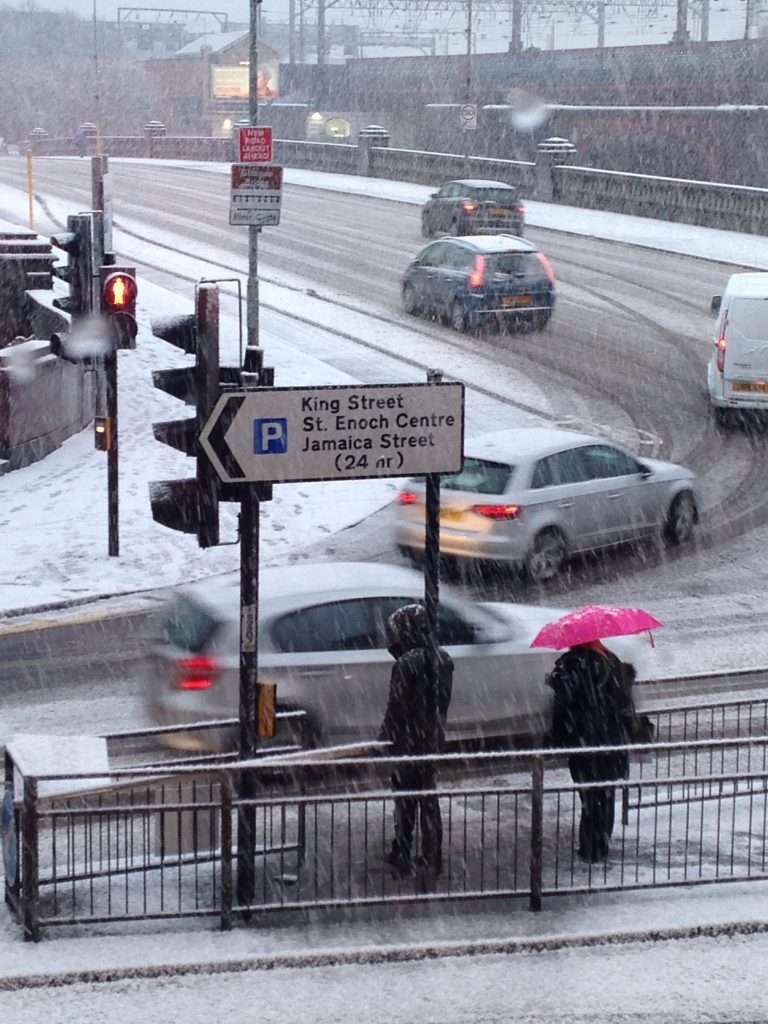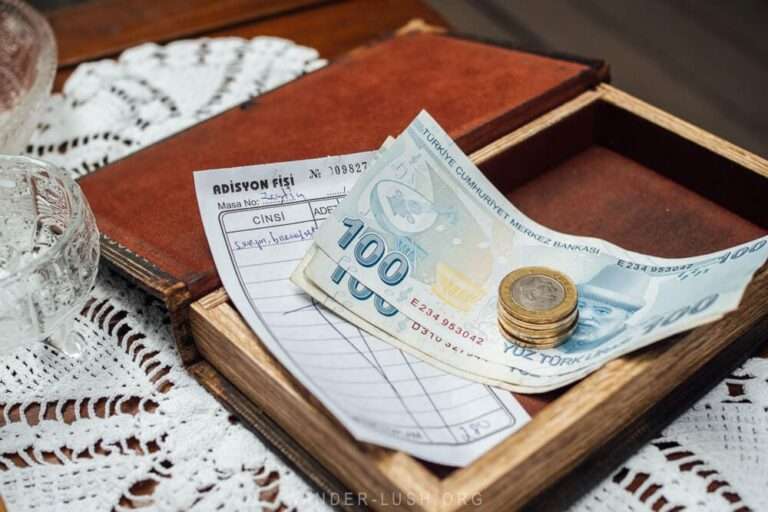There’s nothing quite like the freedom of exploring the world on your own terms. But with that freedom comes the responsibility of packing wisely. When you’re traveling solo, every item in your bag must be carefully considered since there’s no one else to share the load with. You want to be prepared for anything without feeling like you’re dragging around your entire house. I have been traveling solo for over 8 years and I’ve made this guide to walk you through everything you need to pack and help you make the best decisions for your unique journey.
Choosing the Right Backpack or Suitcase
Your bag is more than just a container—it’s your travel companion, your portable home. Picking the right one is crucial, and it largely depends on your travel style and destination.
- Backpack: If your trip involves lots of movement—hopping from city to city, trekking through rural areas, or traveling to places with uneven terrain—a backpack is your best bet. Look for one in the 40-50 liter range. This size is optimal because it’s large enough to fit everything you need without becoming unwieldy. Consider features like:
- Padded straps and back support: Essential for comfort, especially if you’ll be carrying your pack for long periods.
- Multiple compartments: Helps in organizing your gear and makes accessing things easier without unpacking everything.
- Water-resistant material: Keeps your belongings dry in case of rain.
- Lockable zippers: An added layer of security against pickpockets.
- Suitcase: If your travel plans are more city-centric, where you’ll be moving less frequently and staying in more urban settings, a suitcase can be a more convenient option. A carry-on-sized suitcase (20-22 inches) should suffice for most trips. Look for:
- Durability: A hard-shell suitcase offers better protection for your belongings, while soft-shell options can expand to fit more items.
- 360-degree spinner wheels: These make maneuvering through airports and streets much easier.
- Expandable sections: Gives you extra space for souvenirs or items you pick up along the way.
- Integrated locks: Ensure your belongings are secure when left unattended.
Pro Tip: Whichever you choose, make sure to test it out fully loaded before your trip to ensure comfort and ease of movement.
Clothing Essentials: The Art of Layering and Versatility
When packing clothes, the goal is to be ready for a variety of situations while keeping your load as light as possible. The key is versatility—packing items that can be mixed, matched, and layered depending on the weather and cultural norms.
Tops
- Base layers (2-3): Lightweight, moisture-wicking t-shirts or tank tops are essential. These can be worn alone in warm climates or layered under other tops for warmth.
- Casual tops (3-4): Choose a mix of short-sleeve and long-sleeve shirts that can be dressed up or down. Neutral colors like black, grey, white, or navy are ideal because they’re easy to mix and match.
- Dressier top (1): A blouse or collared shirt that can be paired with jeans or skirts for more formal occasions.
Bottoms
- Pants (2): Bring a pair of jeans for cooler days and a pair of lightweight travel pants that are comfortable for walking and can dry quickly if they get wet. Consider convertible pants that can zip off into shorts for added versatility.
- Shorts or skirts (1-2): Depending on your destination and the weather, pack a pair of shorts or a skirt that can be worn casually or dressed up.
- Leggings or yoga pants (1): Great for lounging, sleeping, or layering under other clothes in colder climates.
Outerwear
- Lightweight jacket (1): A waterproof, wind-resistant jacket is a must. Even in warmer climates, it can get chilly at night or during rain.
- Fleece or sweater (1): For colder destinations or chilly evenings, a lightweight fleece or sweater adds warmth without too much bulk.
Undergarments
- Underwear (7-10 pairs): Quick-dry, moisture-wicking fabric is best. It allows for easy washing and drying on the go.
- Socks (3-5 pairs): Bring a mix of ankle socks for everyday wear and one or two pairs of thicker, warmer socks if you’ll be in cooler climates.
- Bras (2-3): Opt for comfortable, versatile styles. A sports bra is a good option for activities, and a more traditional style can be worn day-to-day.
- Sleepwear (1 set): Lightweight, comfortable pajamas that can double as loungewear are ideal.
Shoes
- Walking shoes (1 pair): These should be comfortable, durable, and versatile enough to go from city streets to nature trails. Sneakers or lightweight hiking shoes are great options.
- Sandals or flip-flops (1 pair): Useful for warmer climates, beach days, or just giving your feet a break. Choose something that can also be worn in the shower in less-than-clean environments.
- Dress shoes (1 pair): If you’re planning on attending any formal events or going out in the evenings, pack a lightweight pair of flats or dressy sandals.
Pro Tip: Try to stick to a color palette where everything can be mixed and matched. This increases the number of outfits you can create without packing more items.
Toiletries and Personal Care: Stay Fresh, Stay Light
When it comes to toiletries, less is often more. Focus on essentials and consider travel-sized items to save space. You can always replenish along the way.
- Toiletry Bag: A compact, waterproof toiletry bag with multiple compartments will keep your items organized and prevent spills.
Travel-sized toiletries
- Shampoo and conditioner: If you have specific hair care needs, decant your regular products into reusable travel bottles. Otherwise, most places have local options.
- Body wash or soap: A small bar of soap can last longer and take up less space than liquid body wash. Store it in a travel soap case.
- Toothpaste and toothbrush: A foldable travel toothbrush with a cover is hygienic and space-saving. Consider solid toothpaste tablets for a mess-free option.
- Deodorant: Choose a compact stick or a solid deodorant to avoid liquid restrictions.
- Sunscreen: Essential for any destination. Opt for a travel-sized tube that fits in your carry-on.
- Razor and shaving cream: If you shave, bring a compact razor and a small tube of shaving cream or use multi-purpose products like conditioner as a shaving aid.
- Moisturizer and lip balm: Travel can dry out your skin, so bring a good moisturizer and lip balm with SPF.
Personal hygiene products:
- For women: Tampons, pads, or a menstrual cup are essential. Availability can vary widely by country, so bring enough for your trip. Menstrual cups are space-saving and environmentally friendly.
- Hand sanitizer and wet wipes: Useful for quick clean-ups, especially when access to clean water is limited.
- Prescription medications: Bring enough for your entire trip, along with a copy of your prescription in case you need a refill abroad. Store them in their original packaging to avoid issues at customs.
- Basic first aid kit: Include band-aids, pain relievers (like ibuprofen or acetaminophen), antihistamines, and any specific medication you might need. Add a small tube of antibiotic ointment and any other personal essentials like motion sickness tablets or anti-diarrhea meds.
Pro Tip: Consider multi-purpose products like a solid shampoo bar that doubles as body wash or a tinted moisturizer that also serves as sunscreen and foundation.
Tech Gear: Balancing Convenience and Necessity
Tech can enhance your travel experience, but it can also add weight and take up valuable space. Prioritize what you’ll genuinely use and what can stay at home.
- Smartphone and charger: Your smartphone is your map, camera, and communication tool all in one. Ensure you have a reliable, fast charger and consider a lightweight backup in case yours gets lost or damaged.
- Universal adapter: A must-have for international travel. Make sure it’s compatible with the outlets in all the countries you’ll be visiting and includes USB ports for charging multiple devices at once.
- Power bank: Especially useful on long travel days, a power bank ensures your devices stay charged even when you’re away from an outlet. Look for one with at least 10,000mAh capacity.
- Earbuds or headphones: Noise-canceling headphones can be a lifesaver on flights or noisy hostels. If space is tight, compact earbuds might be a better option.
- Camera (optional): If you’re a photography enthusiast, bring a lightweight mirrorless camera with a versatile lens. Otherwise, your smartphone’s camera should suffice.
- Laptop or tablet (optional): Consider your needs carefully. If you’re working on the road or need a larger screen, a lightweight laptop or tablet can be essential. For leisure, a tablet with downloaded books and movies might be enough.
Pro Tip: Bring a small tech pouch to keep all your chargers, cables, and adapters organized and easy to find.
Travel Documents and Money: Keep It Safe, Keep It Handy
Your documents and money are the most critical items on your list. Being organized and secure with them can save you from a lot of headaches.
- Passport and visa: Your passport is your most important travel document. Check its expiration date well in advance of your trip—some countries require that it be valid for six months beyond your return date. If you need a visa, ensure you have it sorted before departure.
- Printed itinerary: Even if you prefer digital, having a printed copy of your itinerary, flight details, hotel reservations, and important contact numbers can be invaluable if your phone dies or you can’t access the internet.
- Travel insurance: Never leave home without it. Travel insurance can cover everything from medical emergencies to trip cancellations and lost luggage. Print a copy of your policy and keep the emergency contact number handy.
- Credit/debit cards: Bring at least two cards from different providers in case one is lost, stolen, or doesn’t work. Notify your bank of your travel plans to avoid having your card blocked for suspicious activity.
- Cash: It’s always wise to carry a small amount of local currency for initial expenses like transportation or snacks. ATMs are generally accessible in most places, but having cash on hand is a good safety net.
- Travel wallet: Opt for an RFID-blocking wallet to protect your cards from digital theft. A travel wallet that holds your passport, cards, and cash can keep everything in one place, making it easier to keep track of.
Pro Tip: Store digital copies of your passport, visa, and travel insurance in a secure cloud service, and leave another copy with a trusted person back home.
Safety and Security: Peace of Mind on the Road
Solo travel is rewarding but requires a heightened awareness of your surroundings. Packing a few key items can help you stay safe and secure.
- Padlock: A sturdy padlock can be used for hostel lockers, securing your bag, or even locking a zipper on your backpack for extra security in crowded places.
- Money belt: Worn under your clothes, a money belt can be a discreet way to carry your cash, passport, and other small valuables. Some even have RFID-blocking technology.
- Personal alarm or whistle: In case of emergency, a loud whistle or personal alarm can attract attention. It’s a small, lightweight item that can give you extra peace of mind.
- Copies of important documents: Keep photocopies of your passport, visa, travel insurance, and any other important documents in a separate bag from the originals. It can make the process of replacing lost items much smoother.
Pro Tip: Consider a hidden pouch or a scarf with a zippered pocket for storing extra cash or a backup credit card.
Comfort and Entertainment: Make Downtime Enjoyable
Long travel days and downtime are inevitable, so packing a few comfort items can make all the difference.
- Book or Kindle: A good book can be your best friend on long flights, bus rides, or quiet evenings. If you’re a voracious reader, a Kindle can store hundreds of books without the weight.
- Journal: Whether for recording your adventures, jotting down notes, or sketching, a journal is a great companion. Consider a lightweight, durable one that won’t fall apart in humid or wet conditions.
- Snacks: Pack a small stash of non-perishable snacks like granola bars, nuts, or dried fruit. These can tide you over during long days of travel or when local food options are limited.
- Travel pillow and eye mask: If you plan on sleeping on planes, trains, or buses, a compact travel pillow and a good eye mask can make a world of difference. Look for a pillow that packs down small but still provides enough support.
Pro Tip: A lightweight scarf or sarong is incredibly versatile—it can be used as a blanket, pillow, beach towel, or even a modest cover-up in conservative areas.
Miscellaneous Must-Haves: The Little Things That Matter
Sometimes it’s the small, often overlooked items that end up being the most useful. These extras can enhance your travel experience by adding comfort, convenience, and sustainability.
- Reusable water bottle: Staying hydrated is crucial, especially on long travel days. A collapsible or insulated bottle is perfect for refilling at water fountains or cafes. In regions where water safety is an issue, consider a bottle with a built-in filter.
- Foldable tote bag: This can be a lifesaver for grocery shopping, carrying souvenirs, or as an extra bag when you need it. It’s also eco-friendly, reducing the need for plastic bags.
- Towel: A quick-dry travel towel is compact, lightweight, and incredibly useful. Whether you’re staying in a hostel without towels or heading to the beach, it’s a must-pack item.
- Laundry kit: A small packet of detergent, a portable clothesline, and a sink stopper can be a game-changer if you need to do laundry on the go. Quick-dry clothes make this even easier.
- Multi-tool or Swiss Army knife: If you’re camping or heading into the wilderness, a small multi-tool can be invaluable. Look for one with a knife, scissors, bottle opener, and screwdriver.
Pro Tip: A small, portable speaker can be great for setting the mood in your room or enjoying some music at the beach, but make sure to respect local customs and keep the volume reasonable.
Final Thoughts
Solo travel is about embracing the unexpected and being prepared for whatever comes your way. Packing smart not only makes your trip more enjoyable but also gives you the confidence to tackle challenges head-on. Remember, it’s better to under-pack and adapt on the road than to over-pack and have to leave something behind in a hostel in Dublin like I did. Each item you bring should serve a clear purpose and enhance your experience, allowing you to focus on the journey itself.
So, as you pack your bag, think about the adventures ahead, the people you’ll meet, and the stories you’ll collect.
Safe travels!






